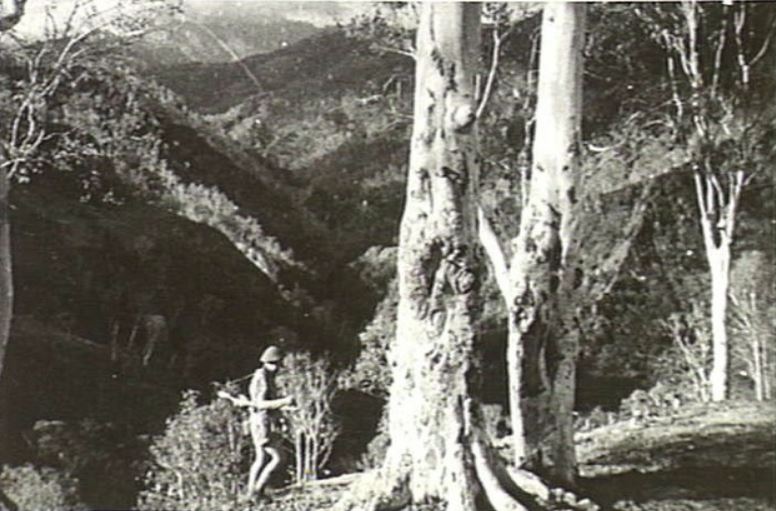2/2nd Australian Commando Squadron
From Our Contribution
Brief History
The 2/2nd Independent Company was formed at Tidal River on Wilson's Promontory, Victoria in July 1941 from Western Australian recruits. It moved to Adelaide in August, and to Katherine in the Northern Territory in October. From there they patrolled the potential approaches to Darwin along the Roper and Daly Rivers. In December 1941 they were sent to Timor as part of the promised support for the Dutch administration known as Sparrow Force. While the main force remained around Koepang, the 2/2nd Independent Company moved to Dili in Portuguese Timor.
On 20 Feb 1942 the Japanese invaded, and following fierce fighting the Dutch and most of the 2/40th Australian Infantry Battalion were captured. Following the attack on Dili, the 2/2nd retreated into the hills where, after linking up with survivors of the 2/40th Battalion, they continued fighting. Initially posted as Missing, they made contact with Darwin in July 1942 while continuing guerilla tactics against the Japanese. In September they were joined by the 2/4th Independent Company and in December 1942 they returned to Darwin before moving to Canungra in Queensland.
In May 1943 the Company moved to Wondecla, and then in June to Port Moresby before concentrating at Garoka to cover all access routes to the Highlands from the western end of the Ramu Valley. In October they were renamed 2/2nd Cavalry (Commando) Squadron and they moved to Faita to patrol the western flank of the advance towards Madang. In February their name changed again to 2/2nd Australian Commando Squadron and they moved in May 1944 to the rest area at Bulolo after the capture of Madang.
In September 1944 they returned to Australia and camped at Strathpine in Queensland until they were recalled to New Guinea in April 1945 to join the 5th Australian Infantry Division which was containing the Japanese forces in Rabaul on New Britain. On arrival they went to Wunung Plantation, moving forward in June to the Tol Plantation and to Lamarien in July. Following the Japanese surrender they entered Rabaul as part of the occupation force until the unit was dispersed.
Unit Personnel
- Frederick Arnold Griffiths 11 Jul 1941 - 26 Dec 1945
- Edward Henderson Craghill 11 Jul 1941 - 9 Jun 1942
Individual Honours
Notes
Since the beginning of 1942 the term "commando" had been increasingly used to describe a member of an Independent Company. The term was an alien one for the Australian Army, and the tasks undertaken by the Independent Companies since the beginning of the war against the Japanese had little in common with the tasks carried out by the British commandos, although on some occasions there were some striking similarities with those of the original Boer commandos. In the short space of two years the Independent Companies had built up a proud tradition . The men regarded the term "Independent Company" as a much better description of what they did than the terms "cavalry" and "commando", and they resented the change of title .
It is submitted that the name "commando" as applied to these units is unfortunate . British "commandos" are the flower of the British Army ; our personnel are, at the moment, merely a cross-section of the Australian Army. In common usage in Australia a "commando" has come to mean a blatant, dirty, unshaven, loud - mouthed fellow covered with knives and knuckle-dusters. The fact that the men in this unit bitterly resent the commando part of their unit name speaks highly for their esprit de corps.
Content has come from The Unit Guide - Volume 2 - The Australian Army 1939-1945, pages 2.490 & 2.491 - Graham R McKenzie-Smith - Big Sky Publishing - 2018

